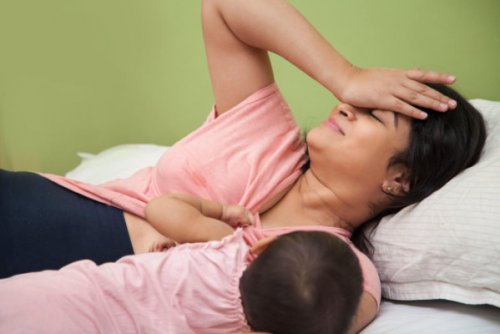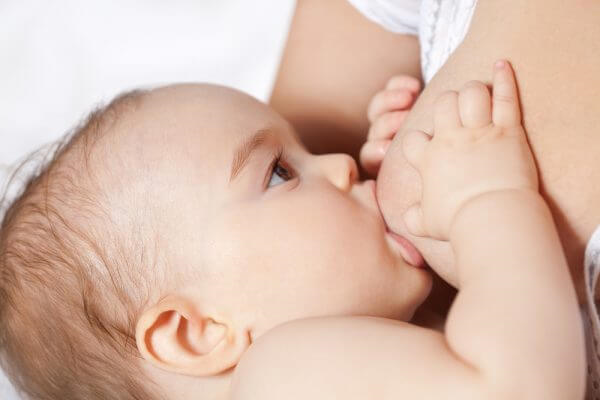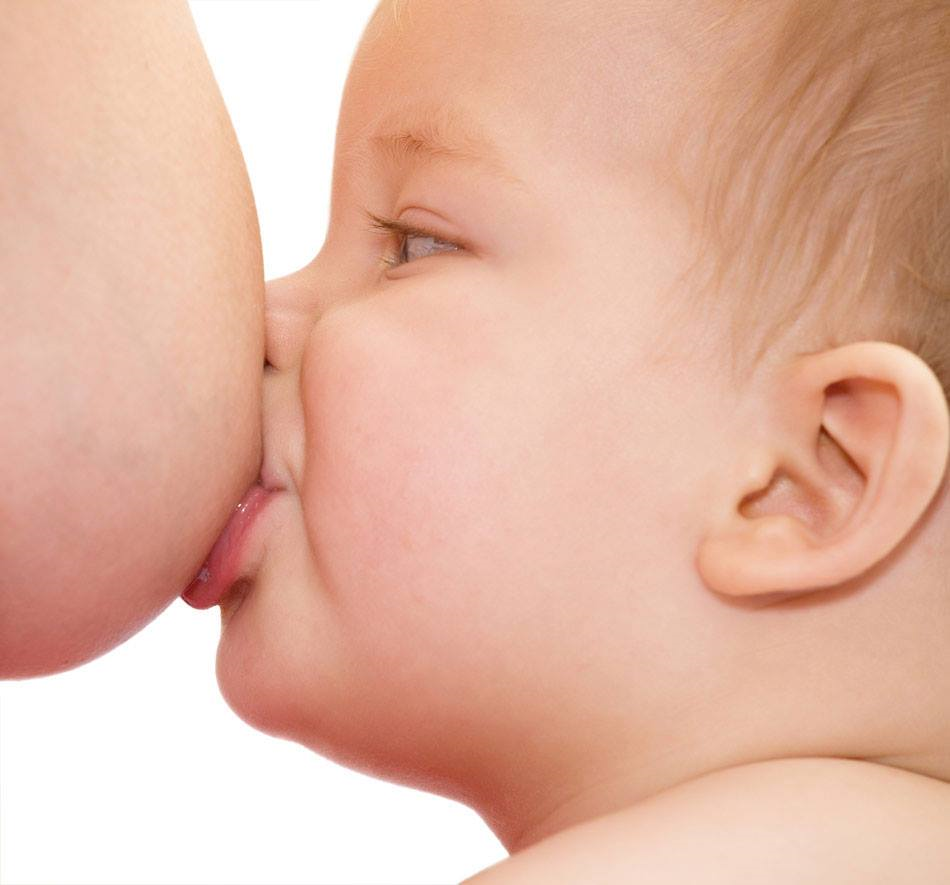5 Remedies To Relieve Nipple Pain During Breastfeeding

Nipple pain during breastfeeding usually occurs in the first weeks. It is thought that 90% of women experience pain of this kind.
However, this pain is usually temporary. Around the 5th day of breastfeeding, nipples will be very sore, but we can not stop!
We should try to relieve this discomfort in order to continue breastfeeding. It is also important to use natural remedies to not create risk for the babies. Moreover, we should look for better ways to breastfeed. For example, the way the baby latches on is a common cause of the pain.
Here are a few ways to relieve nipple pain during breastfeeding;
Change the position of your baby’s mouth on the nipple
Babies can hurt the nipple just from the simple act of suction. In order to prevent or reduce the pain, it is important that we make sure that the baby’s mouth covers the majority of the areola. It is necessary that we make the baby open up its mouth a bit more; this can be done by using a finger.
As stated previously, the most painful weeks are usually the first few. However as the baby gains new suction abilities it gets better.
Apply moist heat

The application of moist heat has been shown as an efficient way to ease nipple pain. It can also help the skin to heal quicker. In order to apply this method, use a clean towel. Wet the towel in warm water (make sure it’s not hot). Squeeze out excess water and place the towel directly on the nipple.
Leave the towel on the nipple until it starts to get colder. You can take it off when it gets to room temperature. After you take it off, repeat the process. This is also a great way to help reduce pain caused by breast congestion.
Use hydrogel pads
Hydrogel pads are products specifically designed for calming nipple pain during pregnancy. They are sheets made from silicone that create a barrier that prevents chaffing. Also due to their composition, they can be refreshing and calming.
The main function the pads serve is to prevent bras or nursing cushions from hurting us. Their size is consistent with the areola and this helps it offer all the protection we need.
Apply breast milk
Breast milk contains natural emollients that are actually very effective in healing hurt nipples. Furthermore, its bactericide action helps to cure and protect quickly. Breastmilk is ideal to apply when there are wounds or cuts around the nipple.
Squeeze out some drops of your breastmilk and spread it around the nipple. Before covering the nipple, wait for the milk to dry up completely.
Balsams and ointments
There are an infinite number of options to treat pain cause by breastfeeding in the market. However, not all of the available options are efficient. Products containing lanolin may cause allergic reactions; its strong smell is also irritating to babies.
If we use creams that the baby rejects we might be putting their feeding at risk.

Nevertheless, there are some natural remedies in the form of balsams and ointments that create a barrier that also helps to calm pain without unwanted side effects. For example, olive oil and products that are made from a base of it are recommended. Olive oil does not have a bothersome smell; it is also natural and very effective.
Ointments that are made from calendula also help to calm pain. The advantage of this product is that its use also helps contribute to the healing of the nipple.
Even though your nipples hurt a lot, it is not recommended to stop breastfeeding. It is very important to continue unless your doctor tells you specifically not to. In the worst case scenario, if the pain is too intense or a complication develops, you can always use a breast pump in order to continue feeding your child.
All cited sources were thoroughly reviewed by our team to ensure their quality, reliability, currency, and validity. The bibliography of this article was considered reliable and of academic or scientific accuracy.
- Brzęcka D, Garbacz M, Micał M, Zych B, Lewandowski B. Diagnosis, classification and management of ankyloglossia including its influence on breastfeeding. Dev Period Med. 2019;23(1):79-87.
- Chakrabarti K, Basu S. Management of flat or inverted nipples with simple rubber bands. Breastfeed Med. 2011 Aug;6(4):215-9.
- Dennis CL, Jackson K, Watson J. Interventions for treating painful nipples among breastfeeding women. Cochrane Database Syst Rev. 2014 Dec 15;(12):CD007366.
- Kent JC, Ashton E, Hardwick CM, Rowan MK, Chia ES, Fairclough KA, Menon LL, Scott C, Mather-McCaw G, Navarro K, Geddes DT. Nipple Pain in Breastfeeding Mothers: Incidence, Causes and Treatments. Int J Environ Res Public Health. 2015 Sep 29;12(10):12247-63.
- Niazi A, Rahimi VB, Soheili-Far S, Askari N, Rahmanian-Devin P, Sanei-Far Z, Sahebkar A, Rakhshandeh H, Askari VR. A Systematic Review on Prevention and Treatment of Nipple Pain and Fissure: Are They Curable? J Pharmacopuncture. 2018 Sep;21(3):139-150.
- Page, T., Lockwood, C., & Guest, K. Management of nipple pain and/or trauma associated with breast‐feeding. Jbi Reports. 2003; 1(4): 127-147.
- Righard L. Are breastfeeding problems related to incorrect breastfeeding technique and the use of pacifiers and bottles? Birth. 1998 Mar;25(1):40-4.
- Tait P. Nipple pain in breastfeeding women: causes, treatment, and prevention strategies. J Midwifery Womens Health. 2000 May-Jun;45(3):212-5.